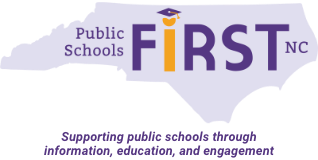With 78 of 100 North Carolina counties designated as rural (shown in green in the map below) our state can’t afford to neglect the needs of rural communities. Our rural counties include some of the most beautiful areas in the nation, drawing visitors from around the world. They are home to many of North Carolina’s most important industries and are critical to the overall well-being of our state. More than a third (34.5%) of North Carolina’s schoolchildren live in rural counties, a percentage second only to Texas. Yet, we are not serving rural communities well.
According to the National Rural Education Association’s most recent annual report “Why Rural Matters 2023, “North Carolina ranks among the states most in need of critical examination due to conditions for rural residents.” The report states that, “Students in rural N.C. are more likely to live in a household with an income below the federal poverty line, have lower enrollment in public preschools and inadequate internet. Instructional spending on N.C. students is relatively low, and students are also less likely to graduate high school than their non-rural peers, a finding not typical of other states.”
Residents of rural communities face interconnected challenges that will require focused and sustained attention to disrupt. For example, because rural areas often have a lower tax base than wealthier counties, they are hard pressed to afford paying salary supplements to attract and retain high quality educators. Yet these low-wealth counties often tax themselves at higher rates in an attempt to provide more services and increase competitiveness. The Public School Forum’s Funding Effort Rank ranks counties according to how much a county’s revenue is appropriated towards K-12 public education. Four of the top five counties showing the most funding effort are rural districts: 1-Scotland, 2-Gates, 3-Stokes, 4-Orange, 5-Franklin. Orange County, which houses UNC-Chapel Hill, is the only urban county in the top 5 (See our interactive map).
The NC Rural Center’s report on Forces Driving Change in Rural North Carolina highlights additional challenges. For example, educational attainment for rural residents lags behind urban and suburban counties: Only 41 percent of the adults (25-44 years old) in North Carolina’s rural counties have a postsecondary degree or credential. This is compared to 51 percent of suburban and 66 percent of urban county adults. Reports also show that 74 percent of rural small businesses owners in the U.S. struggle to find job candidates with the right education, skills, or training for the job.
Another important issue in rural communities is access to affordable high-speed internet. Internet access is essential for education, and it plays a crucial role in improving the quality of education in rural areas. According to data from the NC Dept. of Information Technology, rural counties score much lower on broadband availability and the quality of the broadband. Detailed information about availability and quality index illustrates this rural disparity.
We have compiled more information about our rural counties.
Physical and emotional health pose additional challenges. When North Carolina counties are ranked on health outcomes for their residents (length and quality of life), rural counties disproportionately receive lower rankings.
Rural counties also have some of the highest rates of violent deaths in the state. (Gun-related homicides and gun-related suicides make up 95.1% of all violent deaths.) The ten counties with the highest rates of violent deaths are all rural: Swain, Cherokee, Camden, Bladen, Robeson, Anson, Mitchell, Hoke, Craven, and Pasquotank.
It’s time to focus on strategies to better support our rural communities. One clear example is to halt funding for voucher programs and instead invest the millions earmarked for vouchers—which flow mostly to Cumberland, Wake, Mecklenburg, and Guilford Counties—in rural public schools and communities.
Governor Cooper’s recommended budget adjustments for 2024-25 address many of the needs of North Carolina’s rural communities. He has earmarked funds to support families and contribute to educational opportunities and community development:
- Establish a rural youth apprenticeship program, including $5 million for job coaching.
- Provide $5 million to establish a matching grant program to support teacher preparation residency programs in high need rural and urban districts.
- 8.5% increase in the state base salary to bring beginning teacher salaries to a range competitive with surrounding states.
- Expand the Teaching Fellows program, which incentivizes beginning teachers to teach in rural areas.
- $200 million for Child Care Stabilization Grants to mitigate the fiscal cliff looming due to the end of pandemic relief funding.
- $129 million for child care subsidies to increase reimbursement rates for providers in rural and low-wealth communities.
- $197 million to expand access to NC Pre-K and $24 million to provide summer care and learning programs for students once they complete NC Pre-K.
North Carolina currently has a projected surplus of more than $1 billion this year, so Governor Cooper’s recommendations are well within state budget parameters.
Public Schools First NC has pulled together data from a number of sources to illustrate conditions across the state. Many maps are interactive, so you can scroll to see data for each county. Access them here.
- Tax rates by county
- Average teacher salary supplement 2023-24 by school district
- Percent increase in funding by school district with Leandro funding
- The number of voucher-accepting schools by county, 2024-25 school year
- Dollars spent on vouchers by county in 2023-24
- Median household income by county 2017-2021
- NC Pre-K participation rates by county 2023


